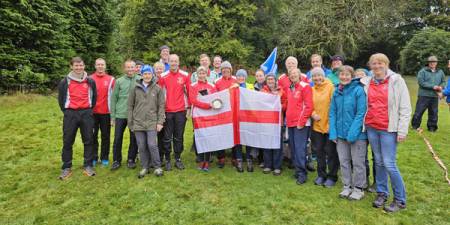Oxford University Orienteering Club's biennial Oxford City Race took place at the end of October. It is an exciting urban event due to the permissions it is able to get from the university and its colleges to include their land in the course. Harry Stuart, the organiser and club president, answers our questions below along with Mike Shires of TVOC who ran the event publicity.
Who was behind the planning process?
Myself and Jean-Luc Portner (OUOC’s Treasurer) were the primary forces behind the planning process. We were given a lot of support from TVOC, the local public club, especially from Ben Green (our controller) and Alun Jones (who coordinated the entries and results). There were almost 50 people helping out on the day between volunteering at assembly and marshalling any one of the 13 gates to colleges on the course. Carys Sharp and Emily Elms of OUOC (and TVOC, BOK respectively) did an incredible job coordinating all the marshals on the day enabling Jean-Luc and I to deal with any unforeseen events.
Tell us how you advertised the event.
Advertising was conducted through a number of different avenues. Through the university we advertised through multiple sports clubs and departments as well as through the university’s social media channels.
Mike Shires of TVOC also coordinated a lot of advertising too; he writes:
“Harry’s brief for the event was to attract as many as people as possible, but with some caution to be exercised about marketing to non-orienteers, bearing in mind the sensitive nature of the access to several colleges.
With this in mind, a Facebook event page was set up and two social media campaigns were conducted. One was aimed at orienteers and promoted the unique selling point of the colleges. The second targeted local runners and promoted the event as an adventure race around the city. This latter Facebook campaign resulted in 4,263 people in Oxford being shown an advert for the race, with around 400 post engagements, and almost 100 people clicking they were attending on the event page. And this was all for £40, demonstrating a good social media advert can reap big rewards.
A printed flyer was also produced, for distributing around local events and a local running shop. The result was a large number of newcomers on the day and many new people introduced to the sport.”
Image below: A montage of the flyers used to publicise the Oxford City Race 2024.
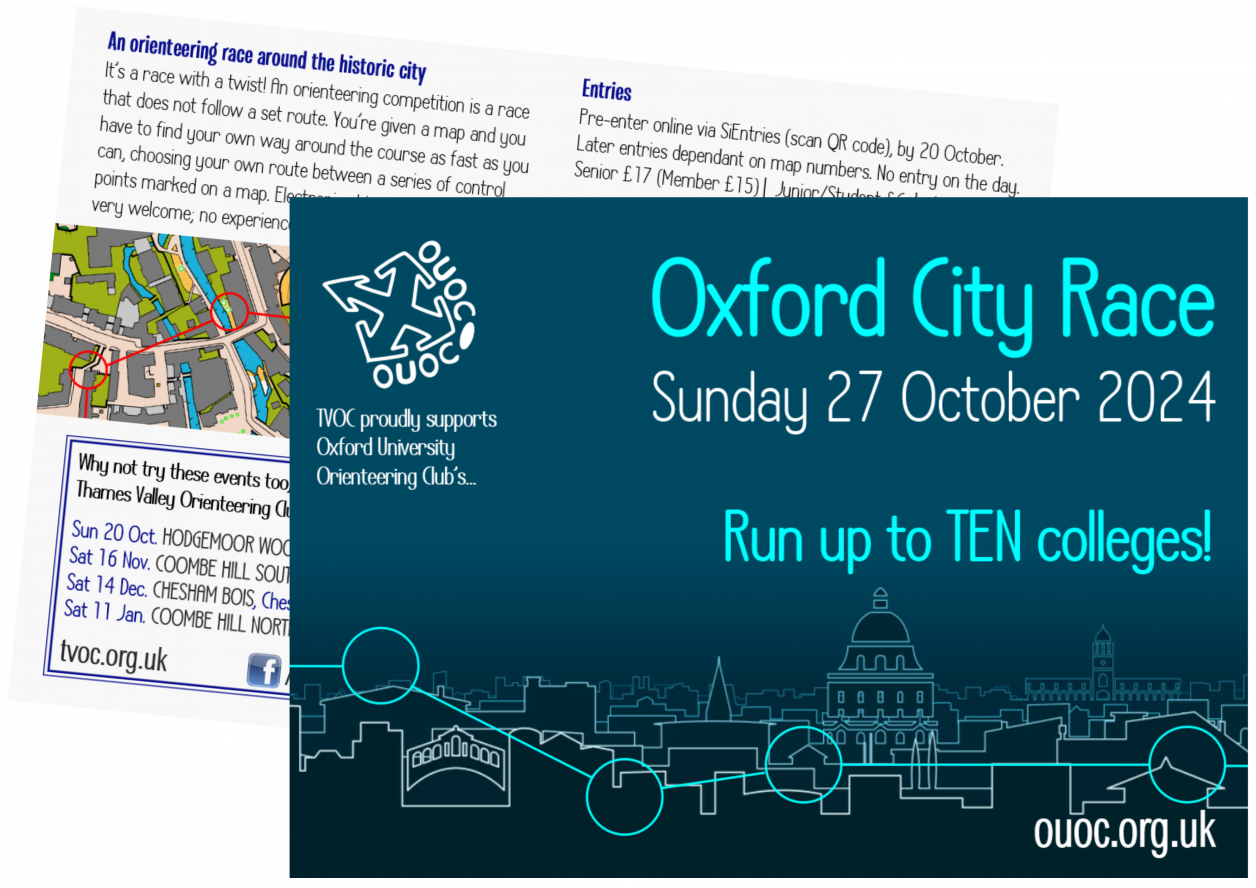
How many participants did you have at the event?
483 – It’s the largest number we’ve ever had, so much so we felt the need to cap entries so as not to overwhelm any of the participating colleges!
What would you say are the benefits of planning an urban event?
Urban areas have the natural benefit of being much easier to access than a forest, especially if you are a university student who travels about by bike, and live within the map of the event area. The straight lines typical of urban areas make it considerably easier to update the map too! Access to local public services means less thought needs to be given to catering and public toilets – though do make sure to bring back up loo rolls as you will get through A LOT…
You also often don’t need to worry about finding marshals for parking. Oxford has four park and rides and a multitude of public transport connections so competitors were left to pick the best option for themselves without us needing to instruct people where to park.
How did you maintain relationships with any key stakeholders when it came to planning the event?
Lots of emails - Over 400 in total! There were many stakeholders for this event. Our permissions list stretched into the double digits and things were changing all the way up to the event day. Many of the colleges we were able to include had never taken part in OUOC’s City Race before so lots of work had to be put into explaining what orienteering was to them, especially the fact that people would be running! That said the ones who had taken part before said yes immediately so those relationships were already formed from the work of our predecessors.
We visited all stakeholders multiple times in the days leading up to the event to check everything was in order and set up the control sites. The day after we also gave them a souvenir map of the course along with a box of chocolates as a thank you.
Image below: Nathan Taylor (Thames Valley Orienteering Club). Credit: Tom Alcock.
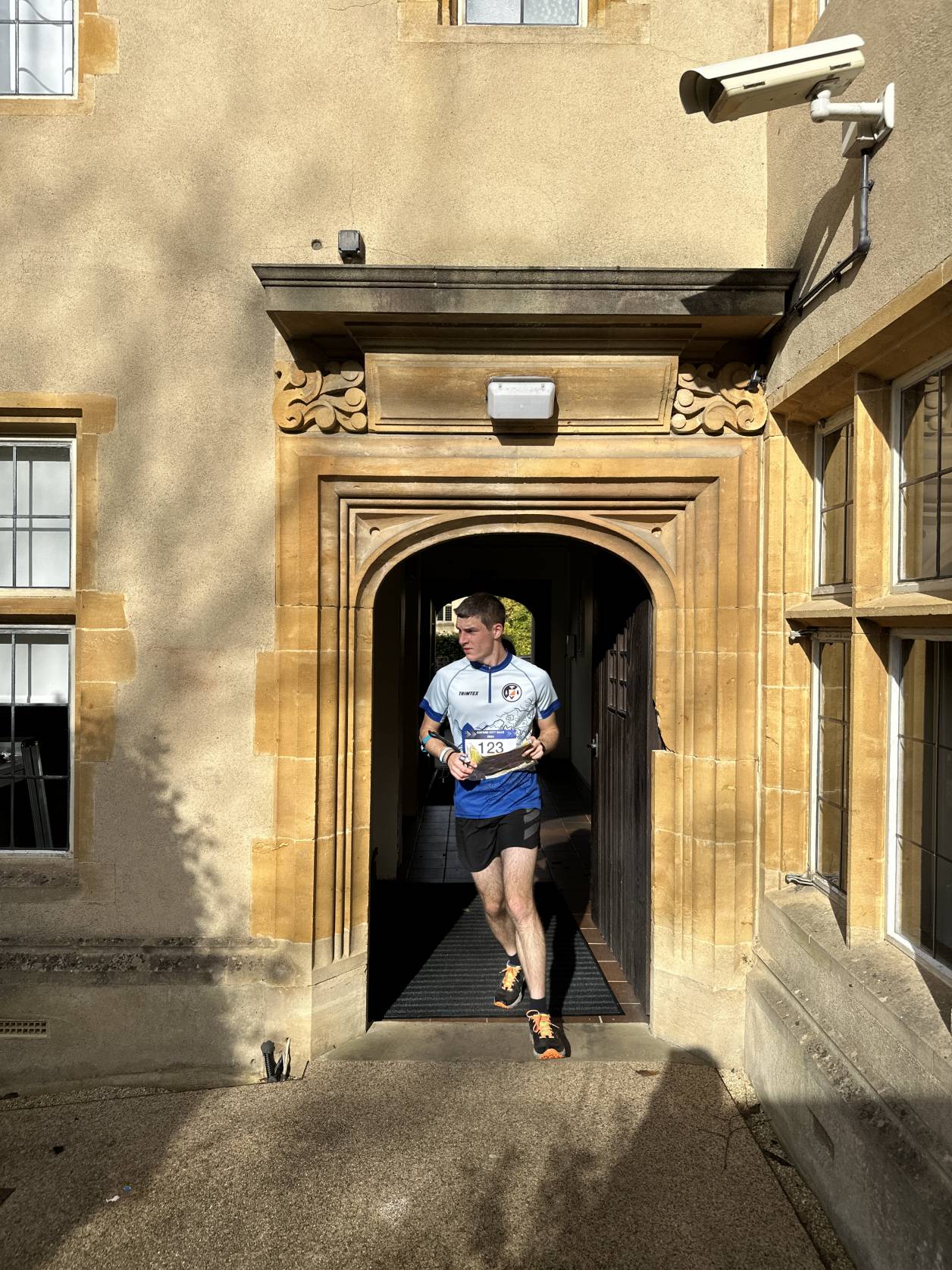
What advice would you give to those clubs who may find themselves responsible for organising a future City Race?
Urban events are at their best when they don’t stick to roads. This is obviously tricky in many places and we are blessed by the location for ours. Don’t be afraid to try and seek a permission to a bit of land where you’ve got a great leg idea – the worst they can do is say no. Changing it up between long legs and sections which are more intricate and rapid keeps things interesting too!
How did you decide to split the courses up?
Courses were split up in the traditional way with 5 adult classes and 2 for the juniors. Given the tourism nature of the event we decided to advertise how many colleges the competitors would visit too – the aim was always to maximise this number for a given distance. To ensure the majority of the courses got to most of the colleges this did require us to loop courses 1 and 2 around a bit, but hopefully the orienteering options provided were still interesting!
What do you think made the event experience for participants?
The (almost) unique selling point of the Oxford City Race is the ability to get permissions from the colleges of the university to use their land within the course. The opportunity to run through the colleges is something only a university club is able to provide. Also being able to open up these areas meant that in some places the course was almost sprint like, the amount of time spent on roads was minimised as far as possible.
Can you share your highlights from the event?
I was based at assembly for the duration of the event responding to anything that came up – A highlight was that very little came up and instead I spent much of my time talking to competitors who had enjoyed the event. Some of our marshals were given bacon sandwiches by the colleges they were at - in turn making all the other marshals (and me!) feel a bit short changed! I also very much enjoyed the videos of the event that popped up online (see below).
What is next for OUOC?
OUOC is taking a break from organising for a bit. We do have some exciting event plans for the future but the impending BUCS, Varsity and potentially European Universities Championships are our current priorities along with our annual Winter Training Camp with CUOC in the Lake District!
Results from the Oxford City Race 2024
_________________________________________________________________________
Learn more about Oxford University Orienteering Club via their website. Or to find a list of upcoming urban orienteering events, visit this link.
More Blog Posts
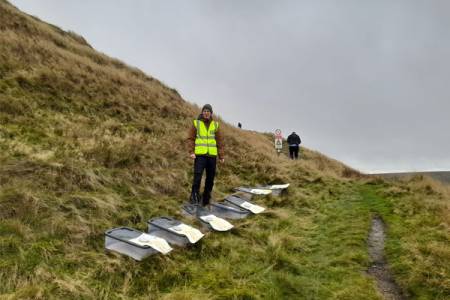
Event spotlight: CompassSport Cup Final – Holcombe
1 November 2024
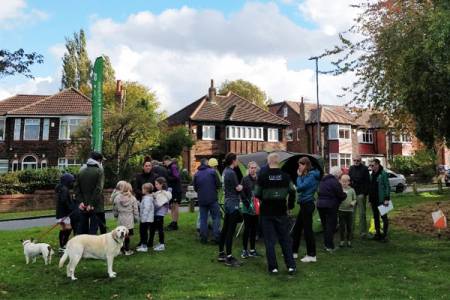
Introducing our sport to newcomers: AIRE Introductory Series (Beckett Park)
22 October 2024
